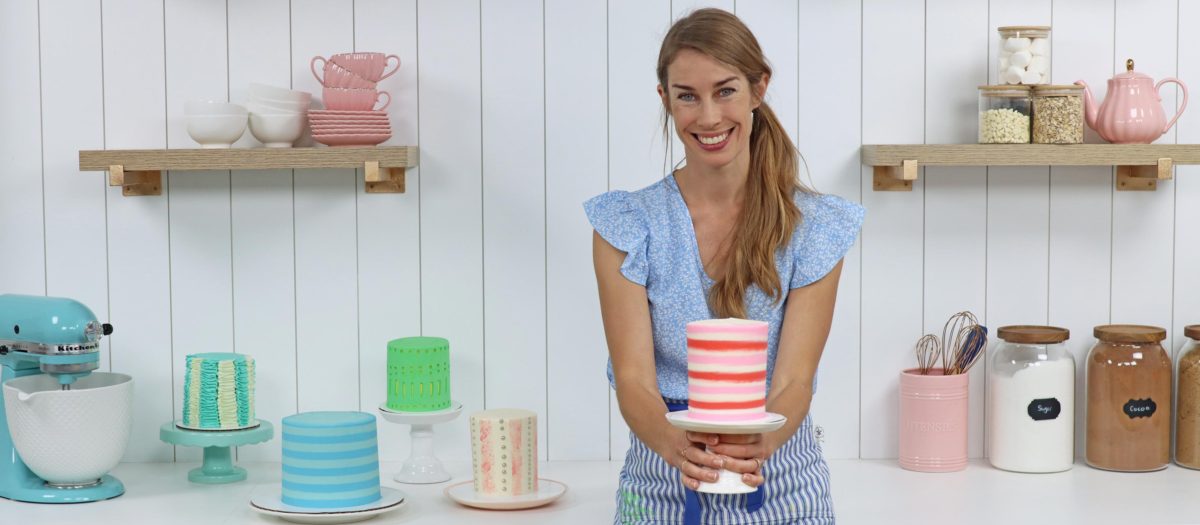
Striped cakes have been trending for a while and with good reason: they’re gorgeous! But instead of using a striped cake comb, which takes a while to master, try these five techniques for quick and easy striped cakes using minimal tools and materials. They’re so easy, you might even call them striped cake hacks!
If you prefer to watch a video of this tutorial, scroll to the bottom of the page.
#1 Piped stripes
For this first technique all you need are two piping bags, or three if you want three colours. Cut the ends off together so they’re all the same size, however wide you want your stripes to be.
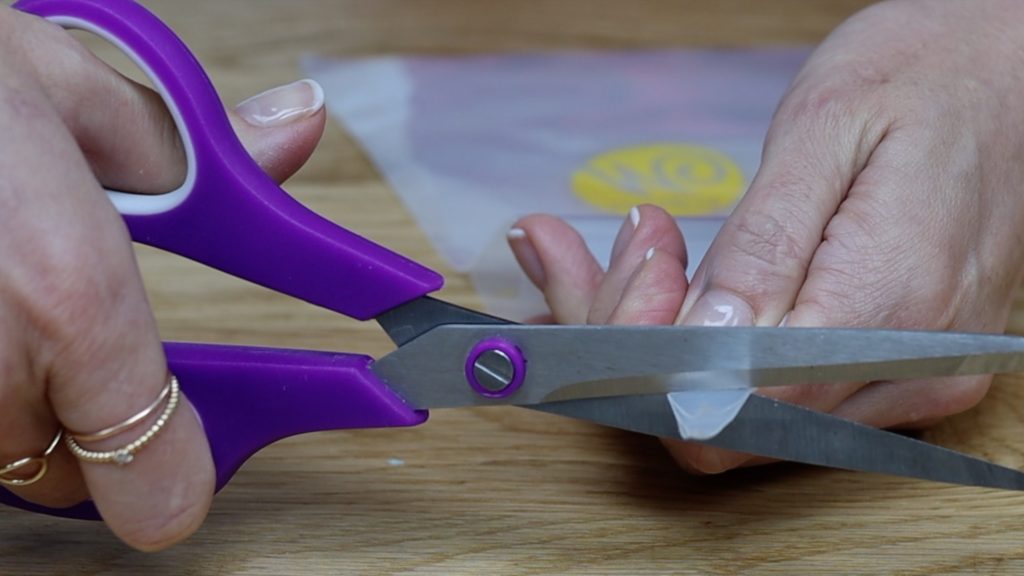
Fill the piping bags with buttercream or whatever frosting you want to use, like whipped cream or meringue buttercream.
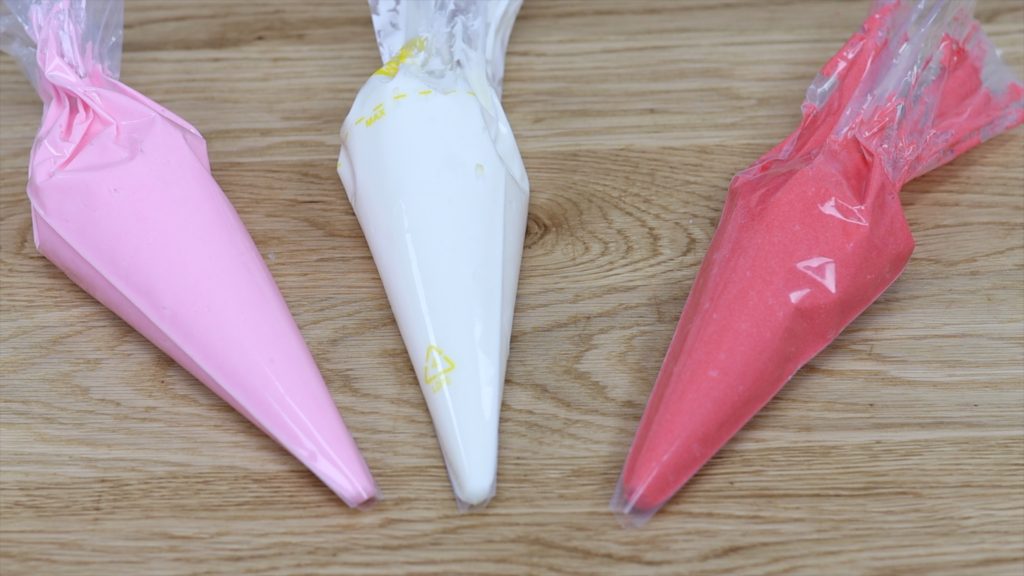
Hold your first bag against the side of the cake, resting down on the cake board, and squeeze the bag to push the frosting out as you spin the cake on the turntable to pipe a strip of frosting all around the cake.
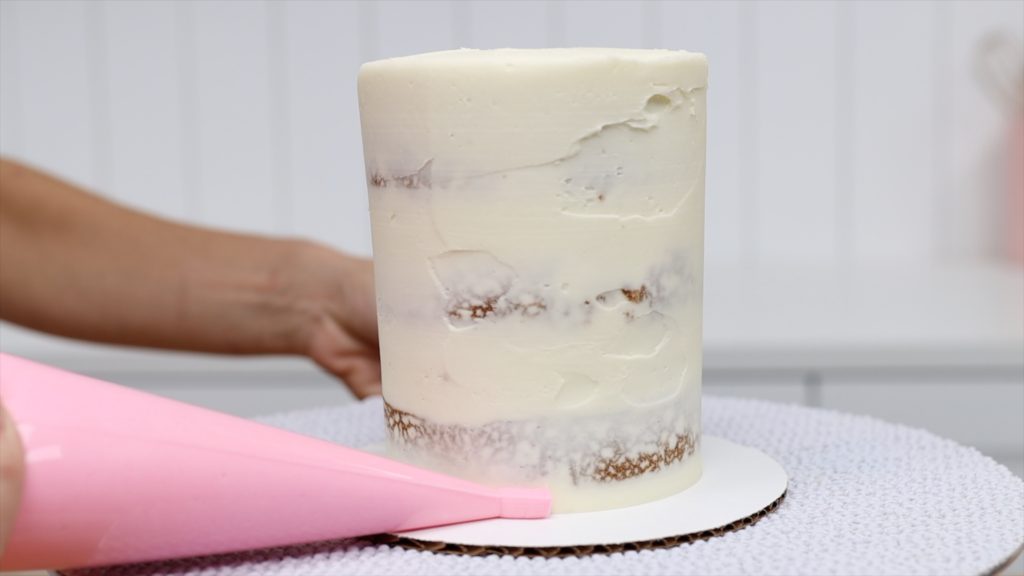
Switch colours and pipe another strip on top, aiming to pipe it so that it’s immediately above the first strip, with no gaps in between.
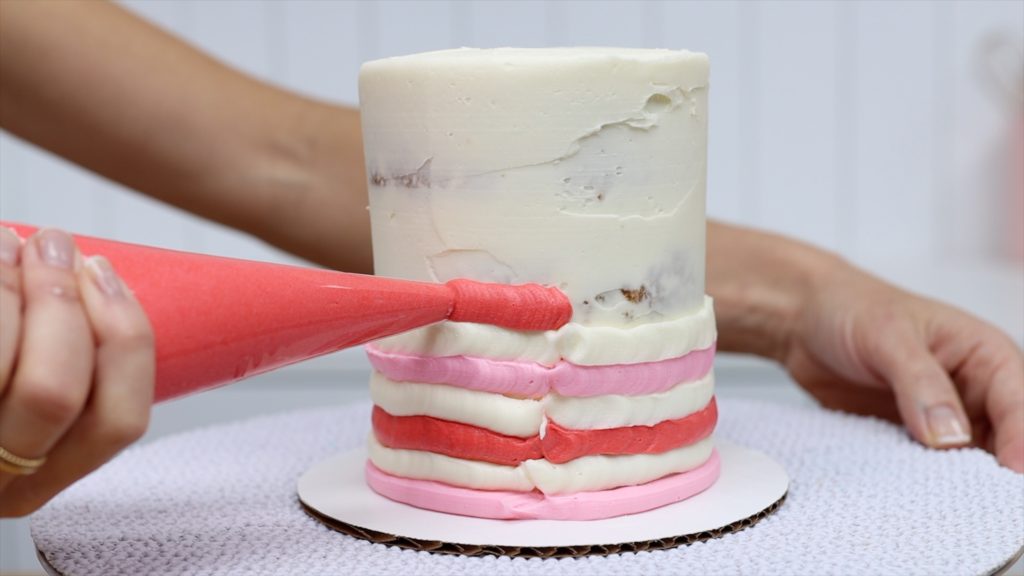
Continue alternating colours and the final colour should go up above the top edge of the cake, and that will prevent indents or air pockets and also give your cake a flat top instead of a domed top.
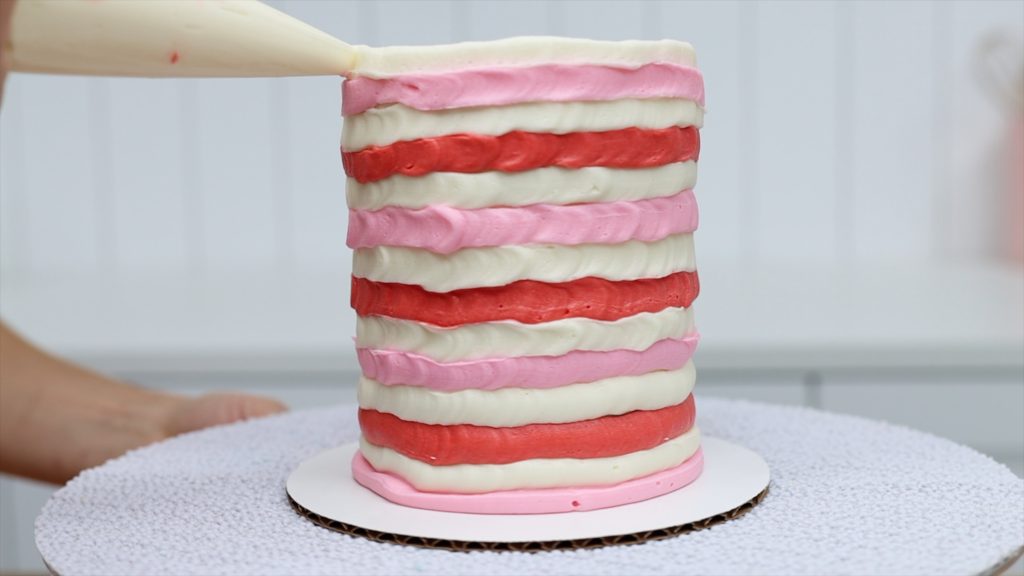
Use a cake comb to smooth the frosting and as you scrape around the cake again and again, your stripes will get neater and neater and neater!
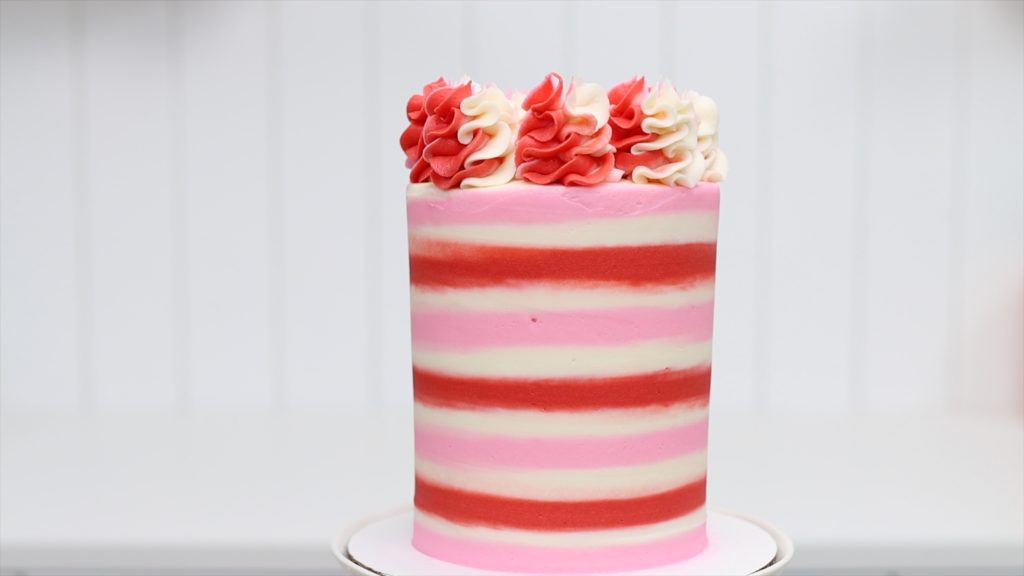
#2 Stencil stripes
If piping and smoothing stripes makes you nervous, this next technique will give you a lot more control over your stripes. You can make your own striped stencil with parchment paper, a ruler, pencil, and scissors.
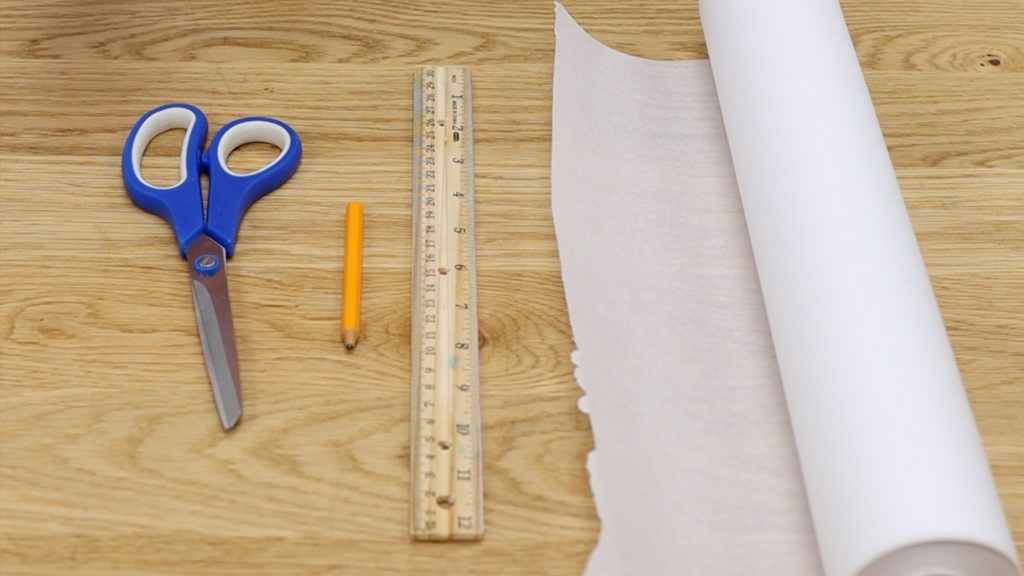
After you frost your cake, put it in the fridge for at least an hour. Cut your parchment into strips, and I’m using the width of a ruler to draw my lines and cut pieces of equal widths. Glide your scissors along or cut with snipping motions, aiming for smooth straight lines because that will give you smooth straight stripes on your cake!
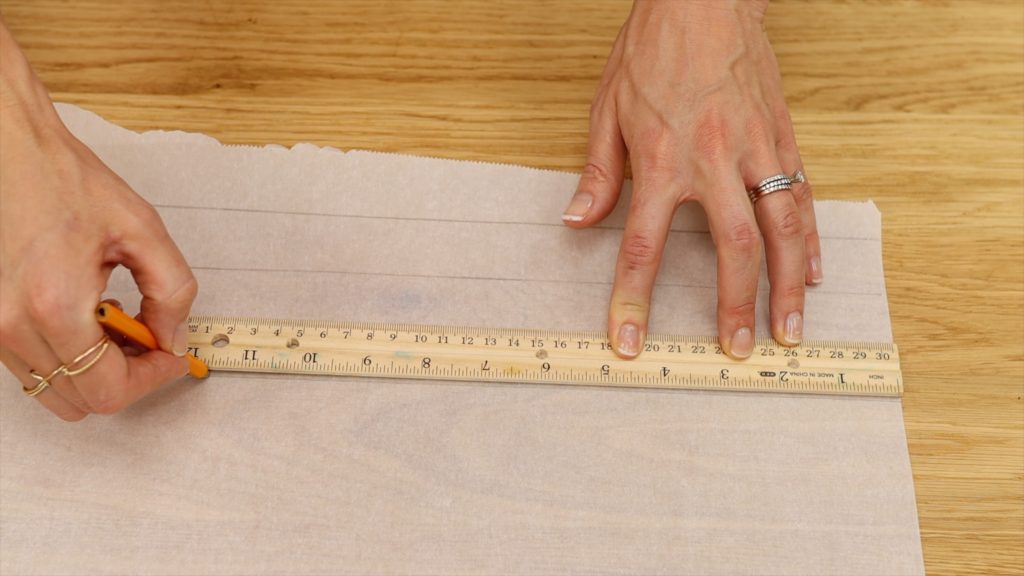
Now make your “paint”, thinning out buttercream with milk to make it more of a paintable consistency. It might look slightly curdled after adding more milk than normal, but it will still work perfectly for this!
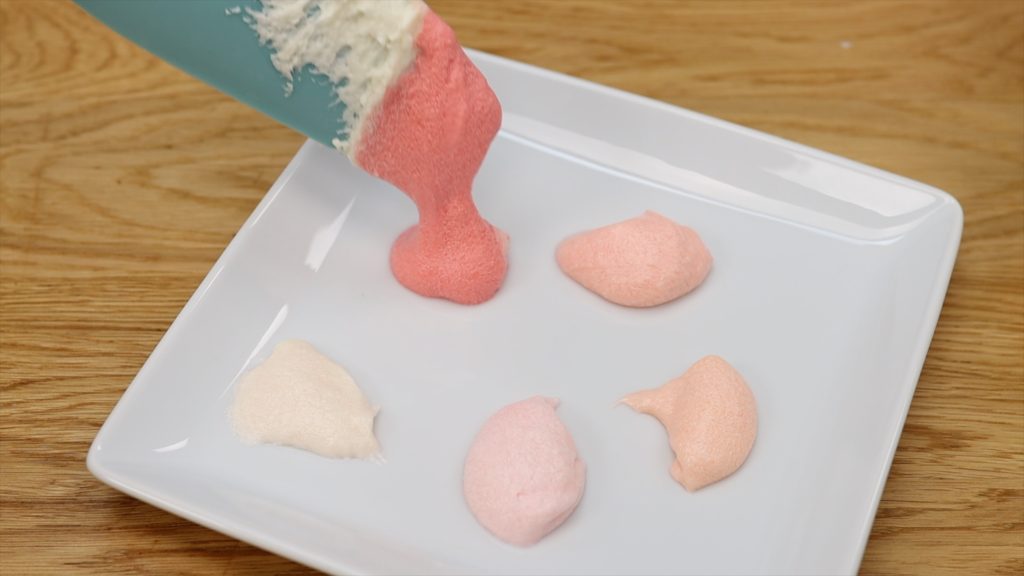
You only need a tiny amount of buttercream for this and a teeny tiny bit of gel, so instead of squeezing out a drop you can dip a toothpick into the bottle and drag that through the buttercream to tint it. You can use just one color or several, to make different colours of stripes going around the cake or to blend the colours within each stripe, which I’ll show you in a minutes. I’m mixing pink with orange and red to make shades of pink, peach, and coral.
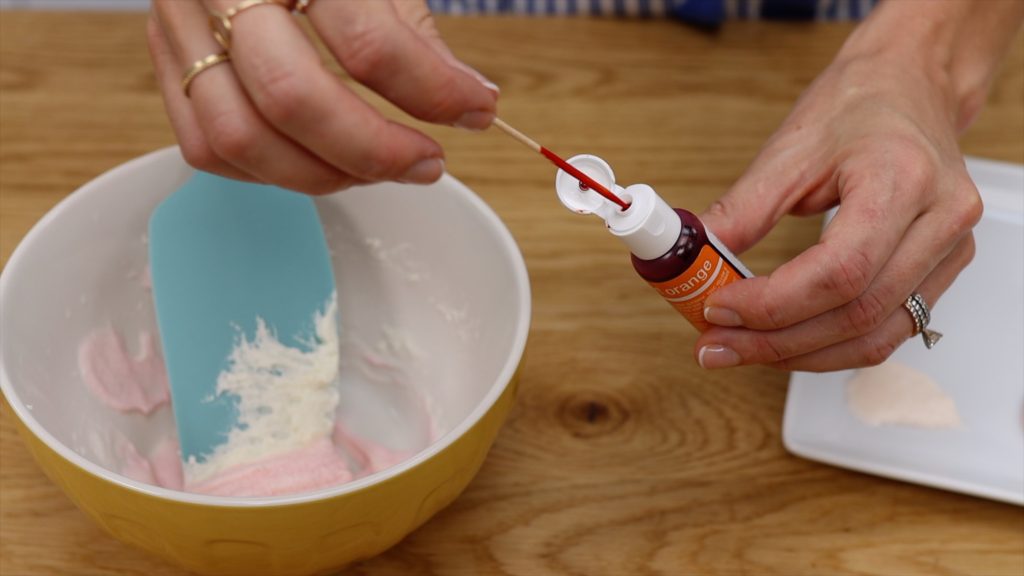
When your cake is cold, take it out of the fridge and press the parchment strips onto the frosting. Since it’s cold, it will be firm and the parchment won’t damage the frosting, and the pressure from your fingers won’t leave indents in the frosting. The frosting will have set, so it won’t be sticky anymore, but after a few minutes out of the fridge some condensation will start to form on the frosting and that will act as glue to attach the parchment paper. You can poke pins or toothpicks through the parchment into the cake to hold the parchment in place, if you prefer.
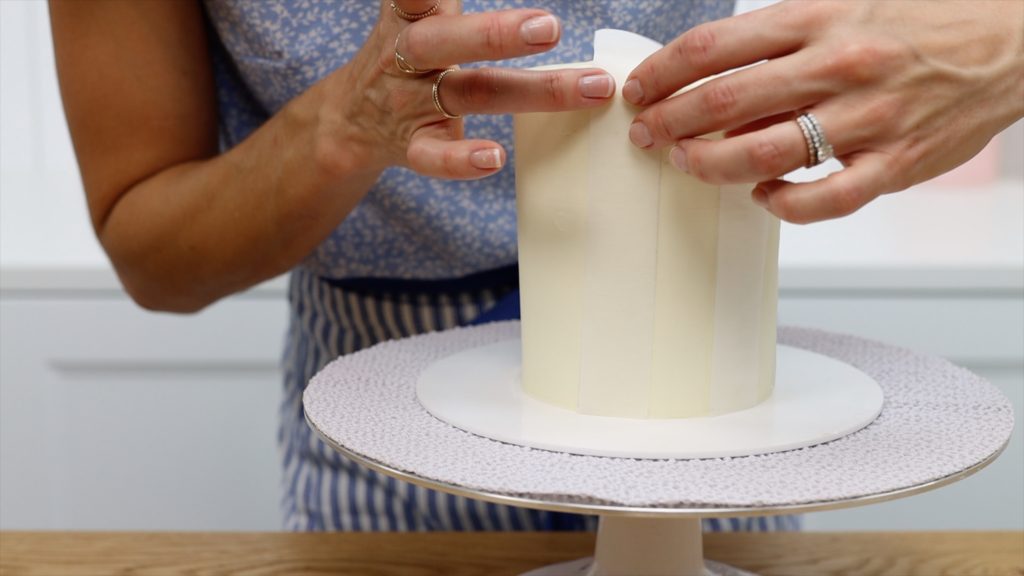
Next, you’ll need a sponge or a paper towel. Dip it into a color and wipe most of the buttercream off so that there’s just a thin layer left.
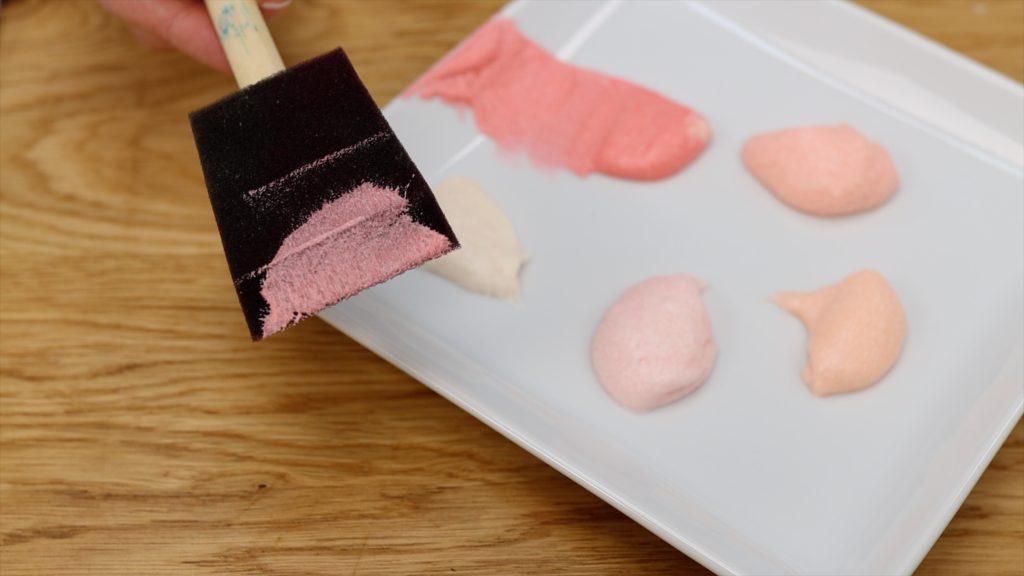
Then dab it against the cake, into one of the gaps between parchment paper strips, holding the parchment strips in place so that the buttercream paint onto covers the stripe of exposed cake. If you have a lot of buttercream on the sponge you’ll leave globs of it on the cake, and you’ll also be more likely to pull the parchment strips away with your sponge. Using just a small amount of buttercream on your sponge means you’ll transfer color to the cake without leaving dramatically raised texture behind.
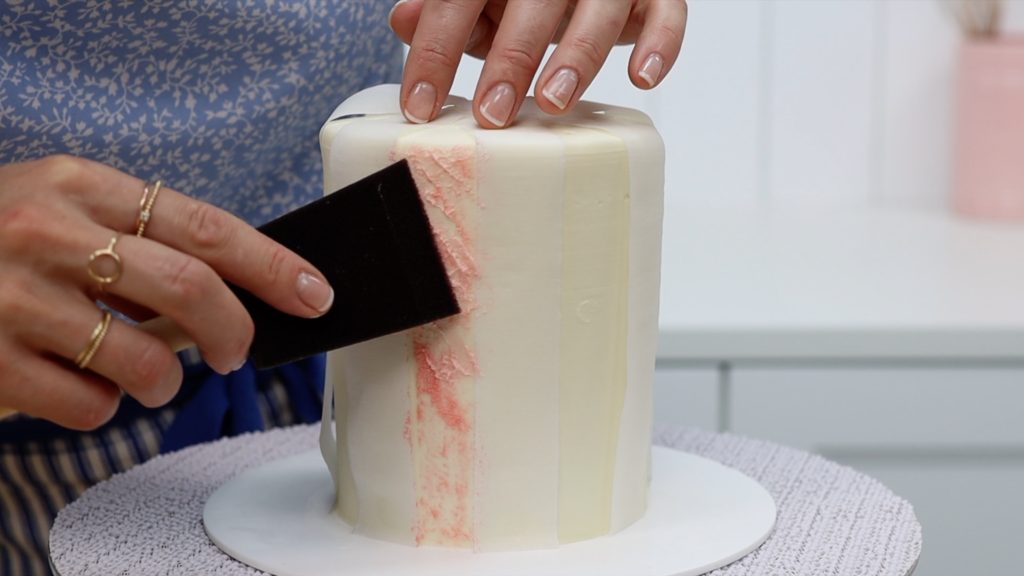
Instead of a sponge you can use a paper towel, scrunching it up and dipping it into colored buttercream and then wiping most of the buttercream off before dabbing the paper towel against the cake.
Dip and dab, dip and dab, alternating colours between stripes or within each stripe, to blend the colours together. I’m using pink and peach and coral, which are all quite similar and when I mixed the colours I started with the same pink base for all of them so I know they’ll blend together nicely.
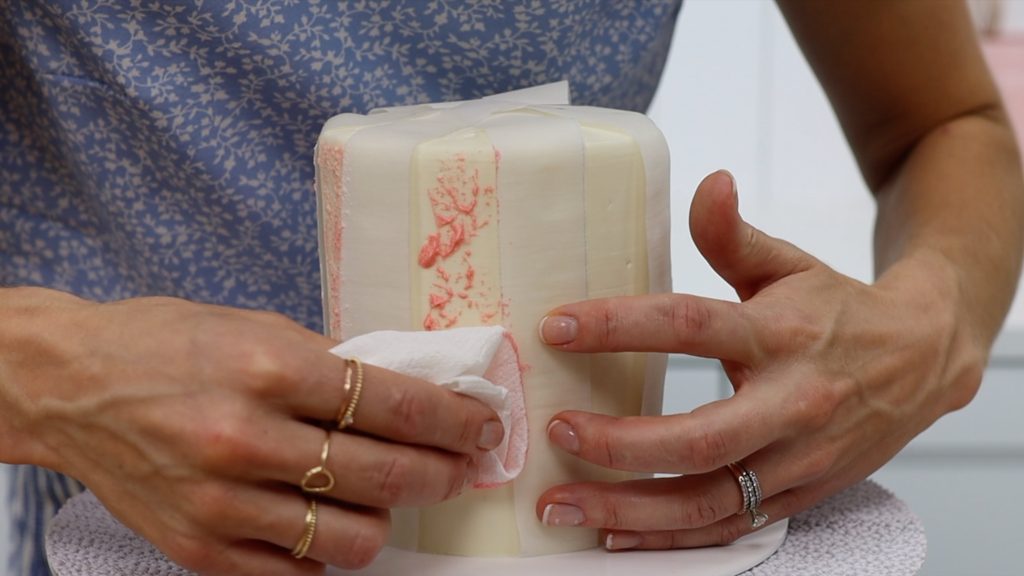
When you’ve covered up all of the gaps between the strips of parchment paper, peel the parchment off and voila! You’ll leave neat stripes behind with colorful texture.
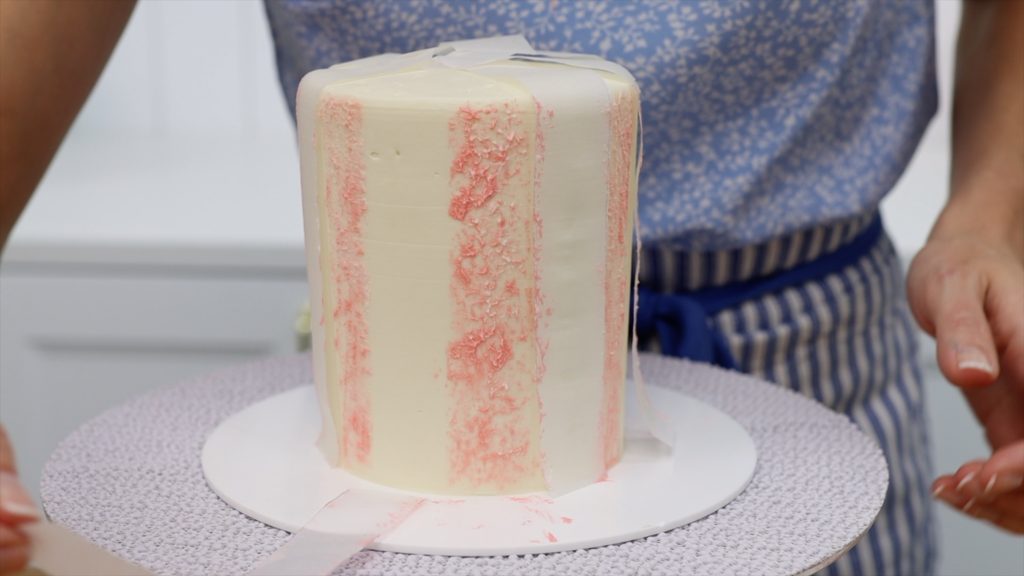
#3 Sprinkle stripes
Use sprinkles to create stripes by pouring a sprinkle mix into a bowl or cup and taking out only the sprinkles you want to use. Tiny sprinkles will take you forever, and huge sprinkles will bulge out of the cake so medium-sized are best for this.
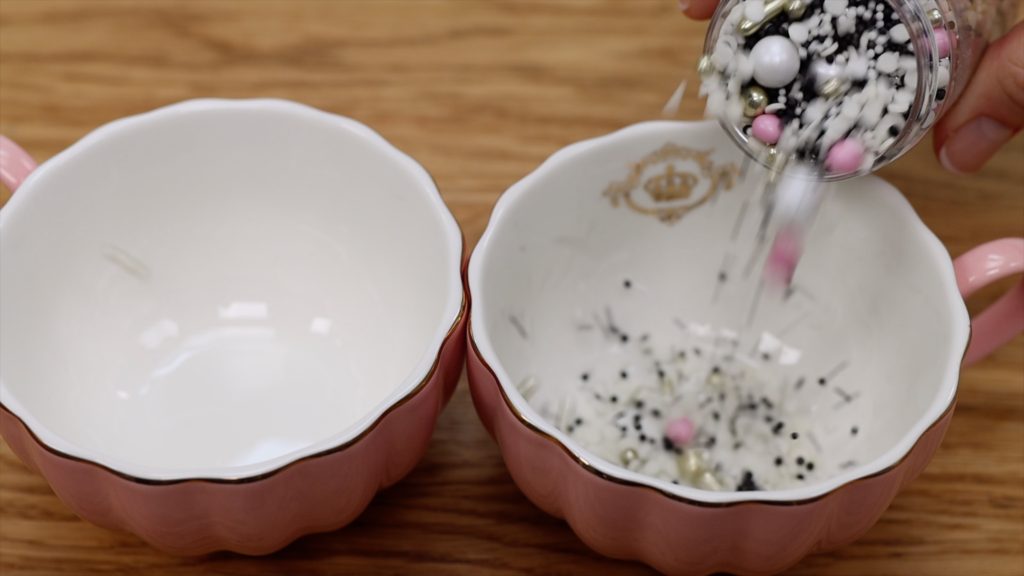
Now press the sprinkles into the frosting on the cake. I like to do this after the frosting sets because you’ve just frosted a cake, as you push the sprinkles in with just a tiny bit of pressure the sprinkles will sink straight into the frosting and can easily get buried in it, but after the frosting has set you have to push quite firmly to attach the sprinkles and that means the sprinkles will sit visibly on the outside of the frosting.
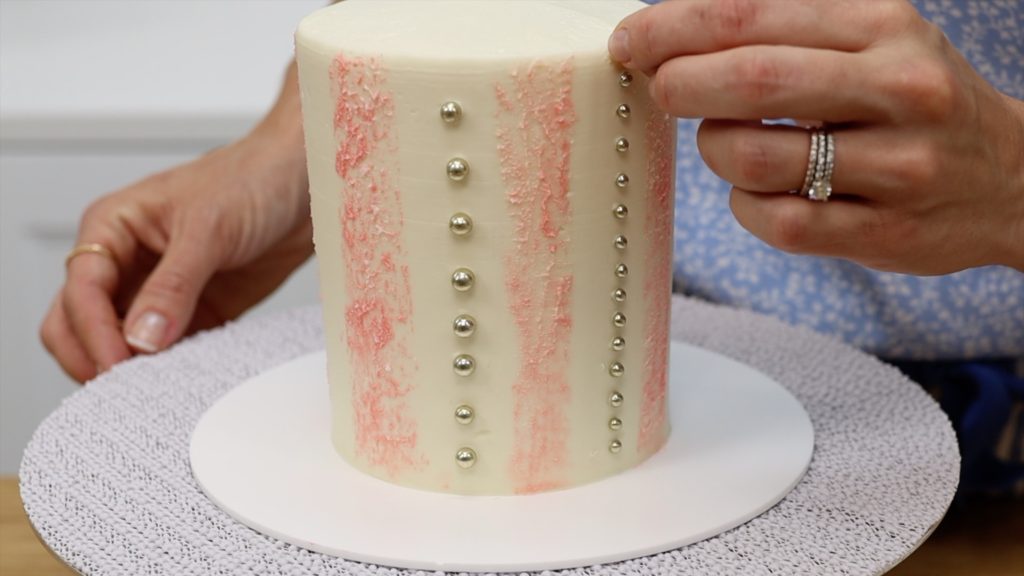
This is really easy because you don’t need any tools at all, and I love the texture that the sprinkles add to the cake.
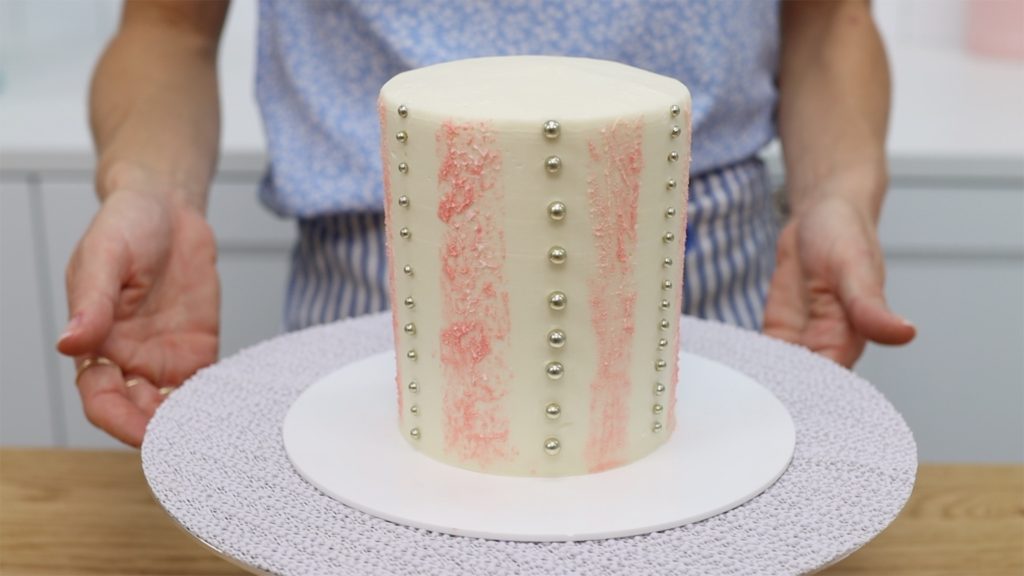
#4 Ruffle stripes
To create ruffles stripes you’ll need two petal piping tips so that you can pipe two colours. If you want three colours, you’ll need three tips. Put each piping tip in a piping bag and fill the piping bag with colored buttercream or whatever frosting you’re using, and push the frosting down to the tip of the piping bag.
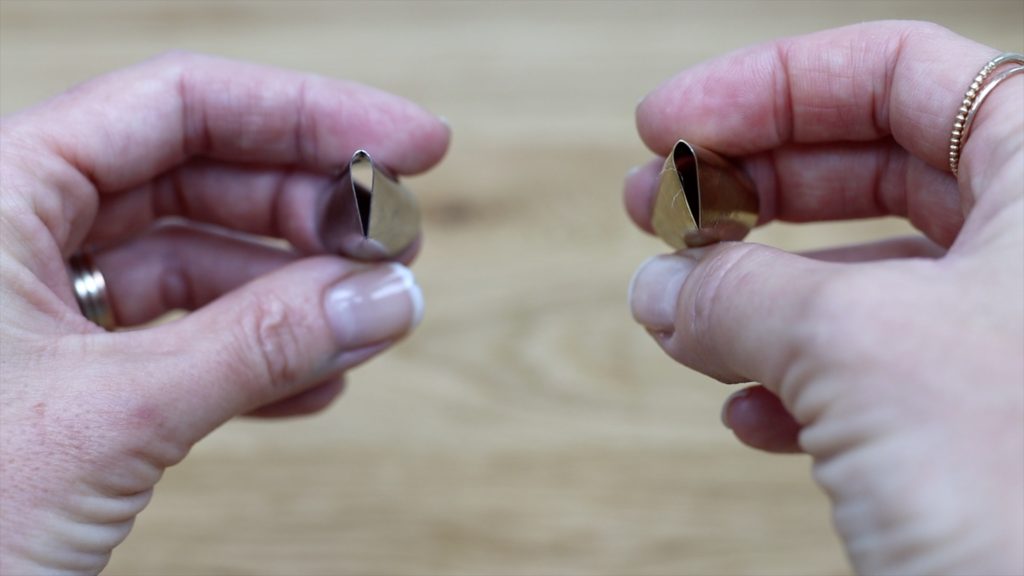
Outline your stripes on your crumb coated cake with straight edge of a cake comb, resting down on the cake board to line up straight. I do two lines opposite each other, then divide it into quarters, and then add lines between those dividing lines to make equal width sections as a guide while piping.
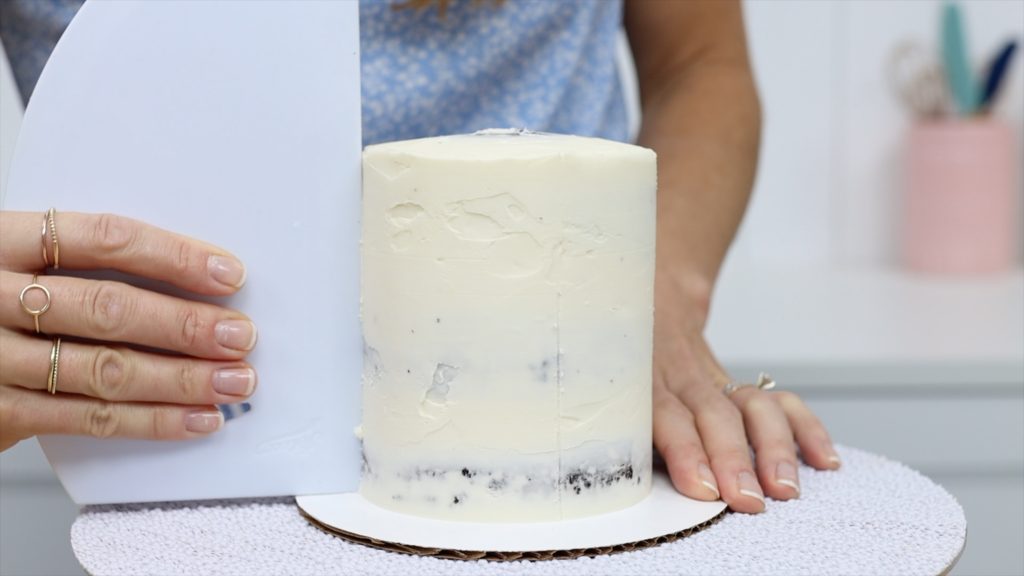
Spread frosting onto the top of the cake and smooth it and then use your cake comb to scrape around the cake to take off the frosting that’s sticking out over the sides of the cake, so that the sides of the cake are straight.
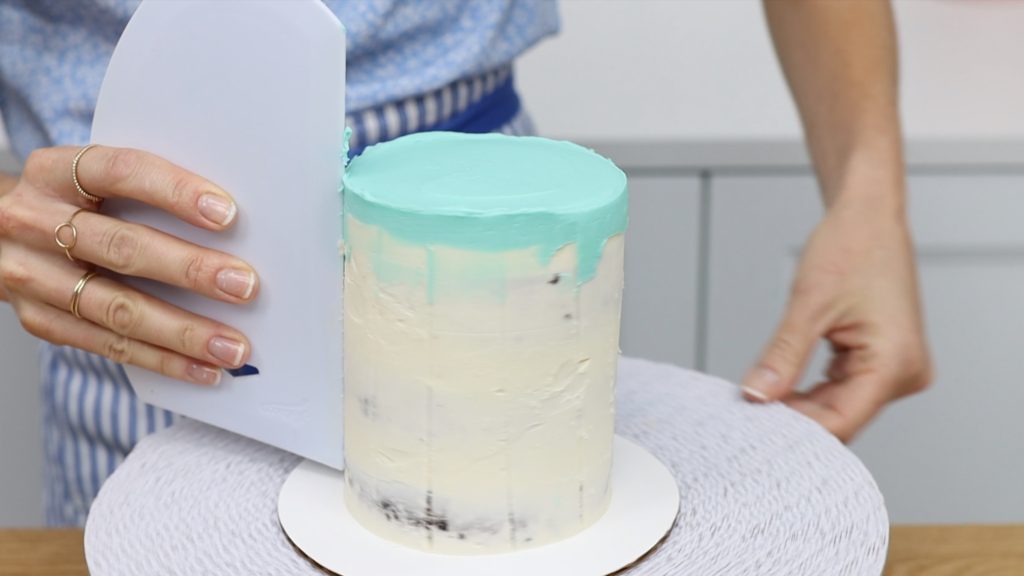
The top of the cake is going to be visible even after piping the stripes so tidy up the top edge by pushing and offset spatula sideways to take off any buttercream that’s sticking up.
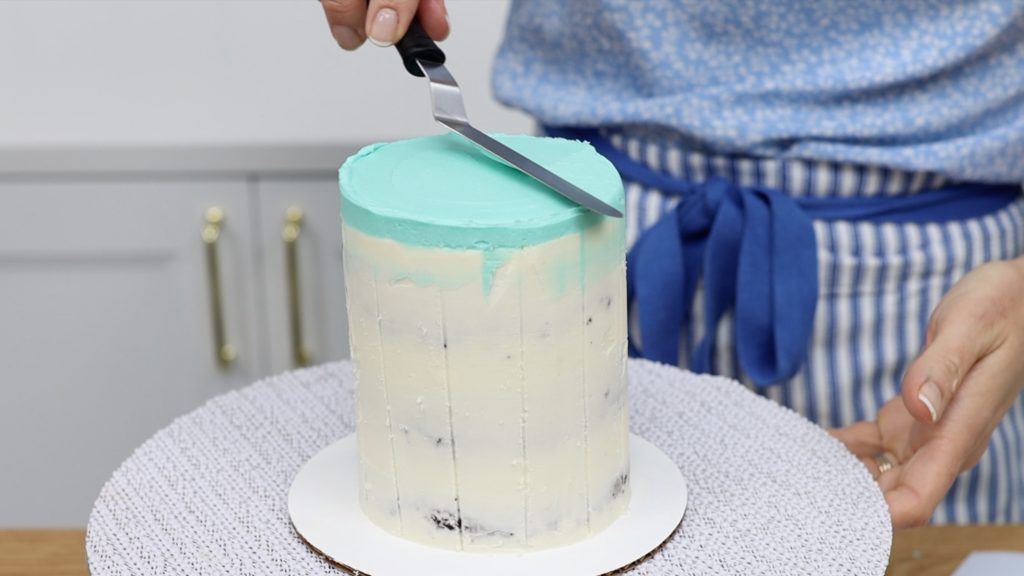
Hold your piping tip facing down, with the wide end of the piping tip pressed against the cake and slowly pull the tip sideways, keeping the wide end touching the cake so that the buttercream attaches to the cake.
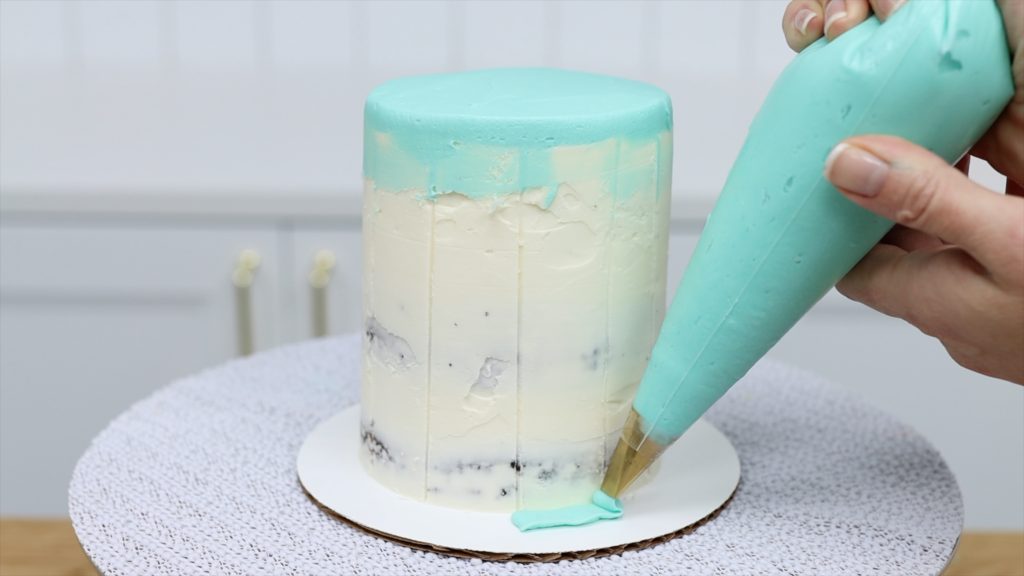
Move the bag from side to side as you gradually lift it up the side of the cake, using those lines you indented in the crumb coat to keep the ruffles directly over each other, and that will make your ruffle stripes straight and even.
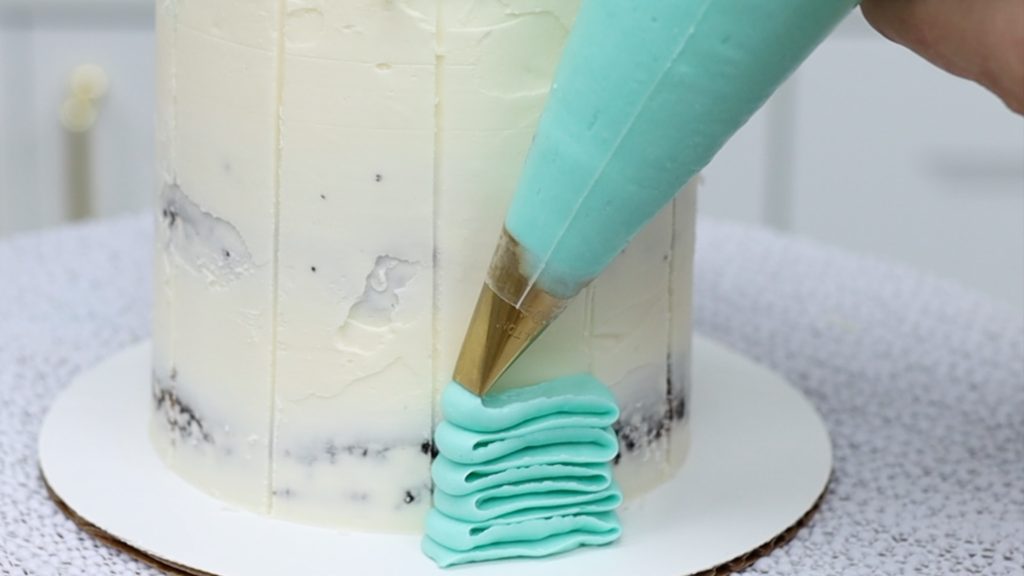
Switch piping bags to the next colour and repeat the process beside the first stripe, going right up to the edges of those first ruffles and up to the next line you indented on the other side.
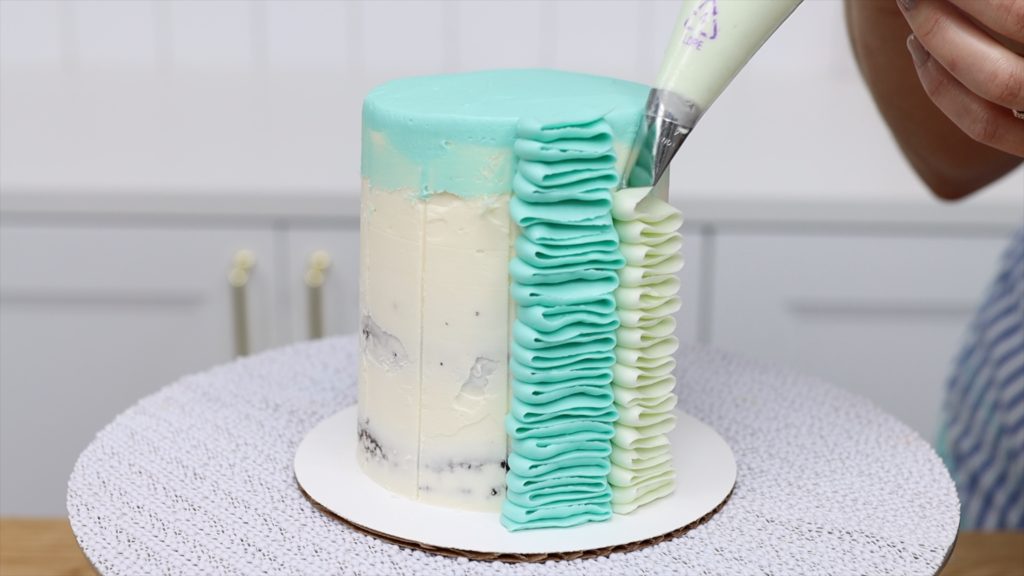
If the crumb coat has set before you do this it’s easiest because if you make a mistake you can scrape it off the cake without damaging the crumb coat frosting on the cake. I chill my cakes for about an hour rim the fridge after crumb coating but before applying the final coat of frosting, and that’s why.
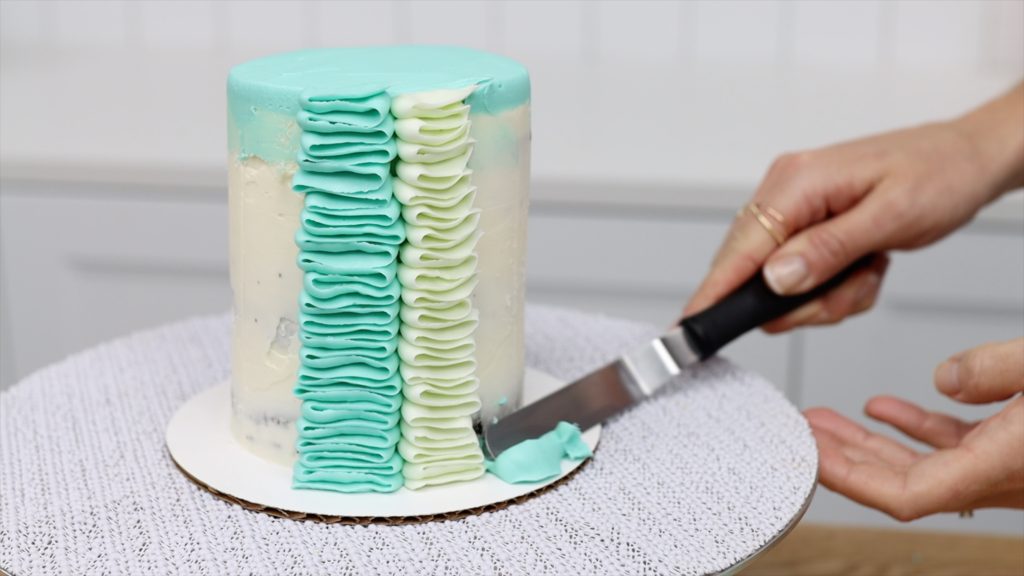
Continue all the way around the cake and at the top of each ruffle, finish it off in the same direction, so for this cake I’m piping towards the right and then swiping away so that all of the ruffles match. When you finish the cake you’ll have ruffled stripes that add both colour and texture to the cake!
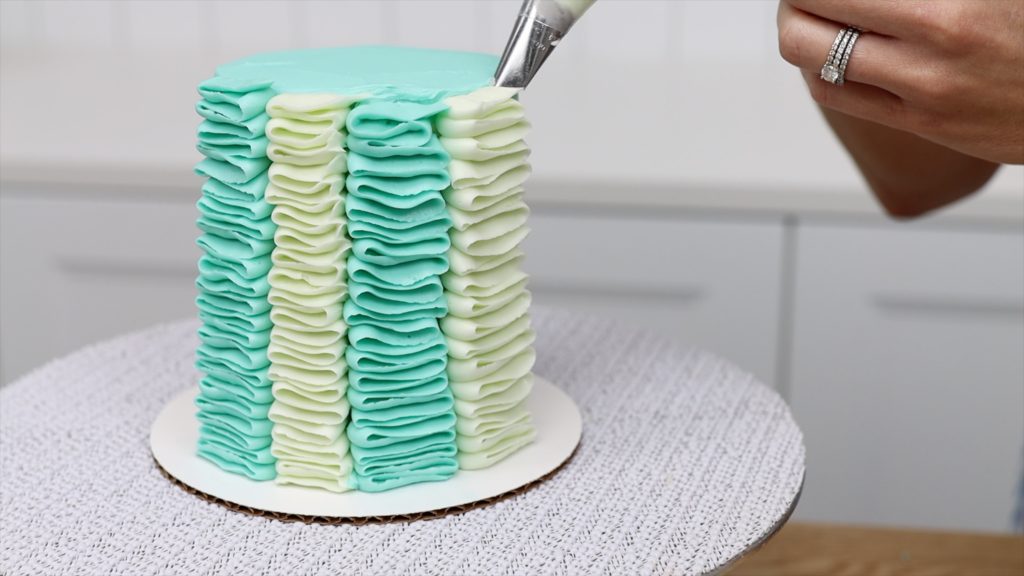
#5 Carved stripes
Carving striped patterns is fun and unique and everyone will ask how you did it! After frosting your cake, chill it in the freezer for 15 minutes before spreading another colour of frosting on top, and smooth that too.
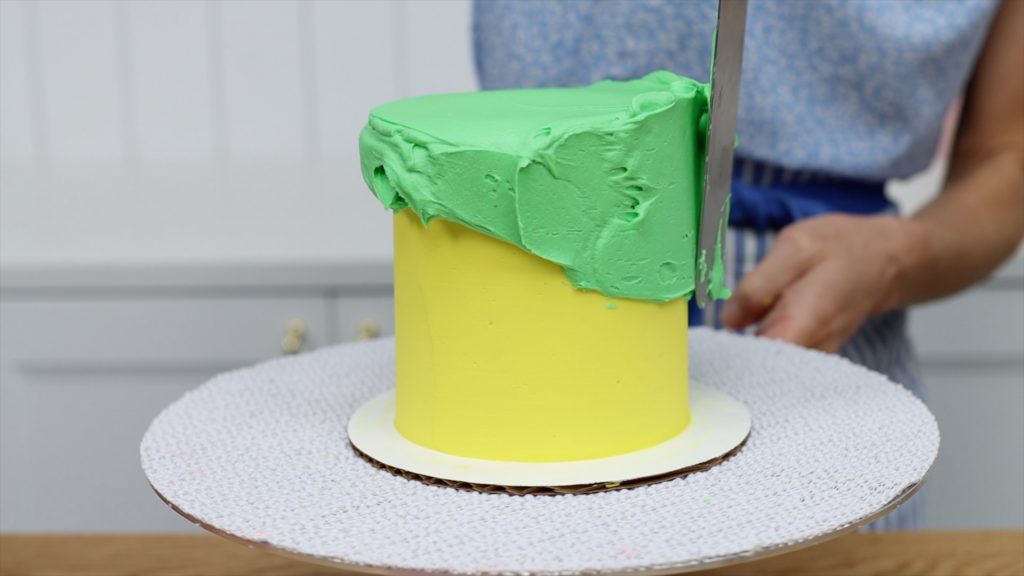
Freeze for another 15 minutes and then use clay modeling tools to carve the frosting. You can buy these here and my favourites are the one on the left for small dots, the one on the right for large dots, and this one in the middle for lines.
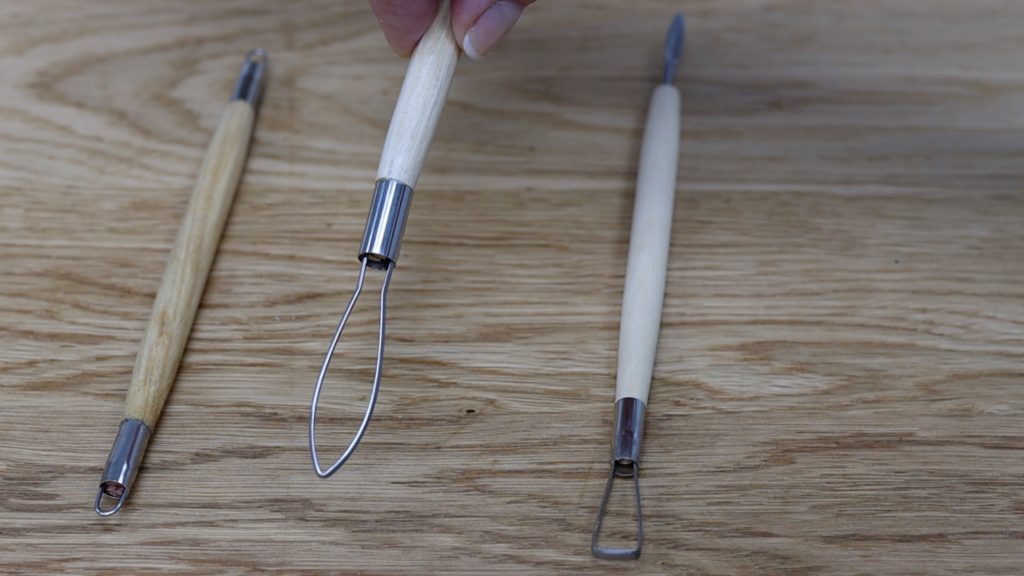
Dip your tool into hot water, tap the water off to leave the tool dry but warm. Then twist it into the frosting to scoop out a circle to make a dot.
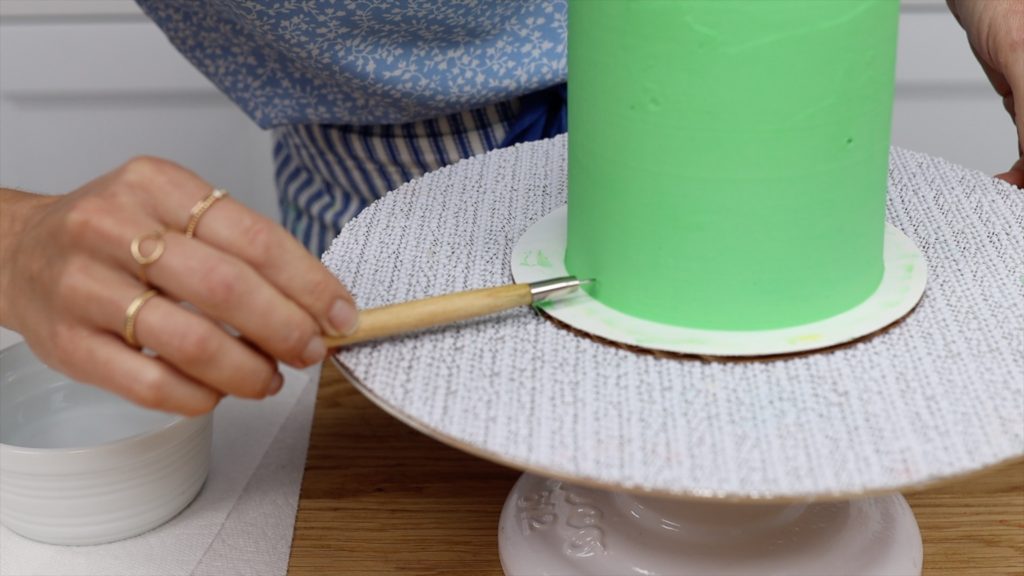
As soon as you seen the colour underneath coming off onto your tool, you know you’ve gone through the top layer of frosting so the dot will be the colour of the frosting underneath.
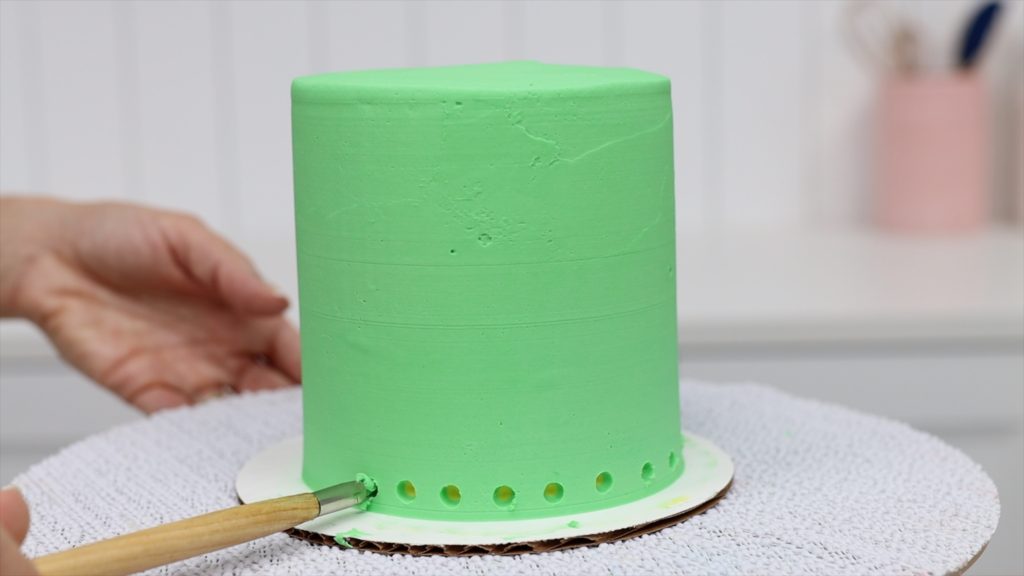
This is a quick and also satisfying and therapeutic way to create stripes! I love watching the carving come to life. I teach an online course on buttercream carving covering how to choose your tools and how to use them to create shapes, textures, designs, and more – click here to sign up with 25% off!
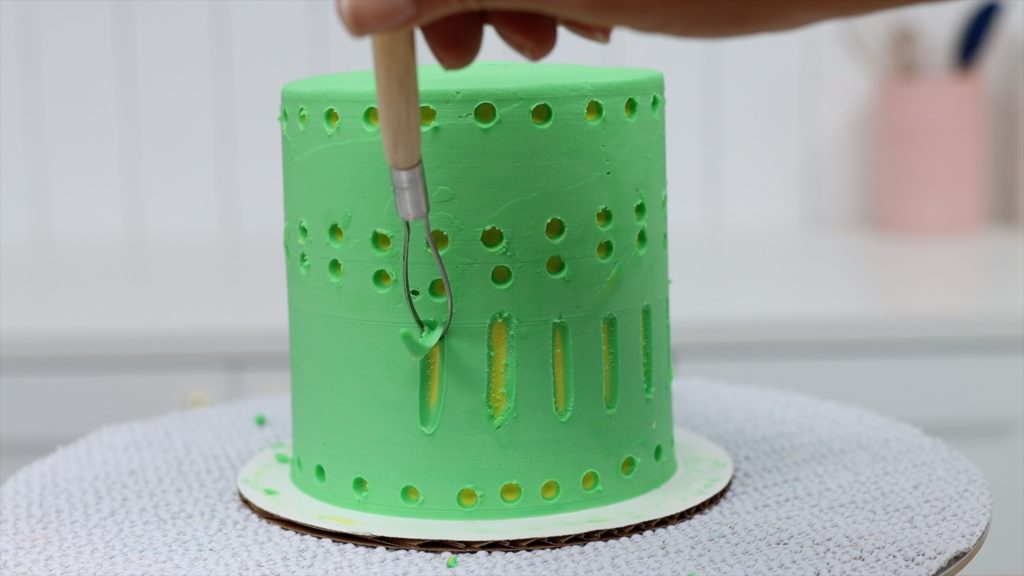
I hope you’ve seen a stripe hack that you’d like to try. If you want to use a striped cake comb instead, I have a very detailed tutorial on 4 Secrets for Perfect Stripes.
Check out my online cake school for LOTS of courses on hundreds of cake designs and techniques. Join my ClubPLUS for access to them all!
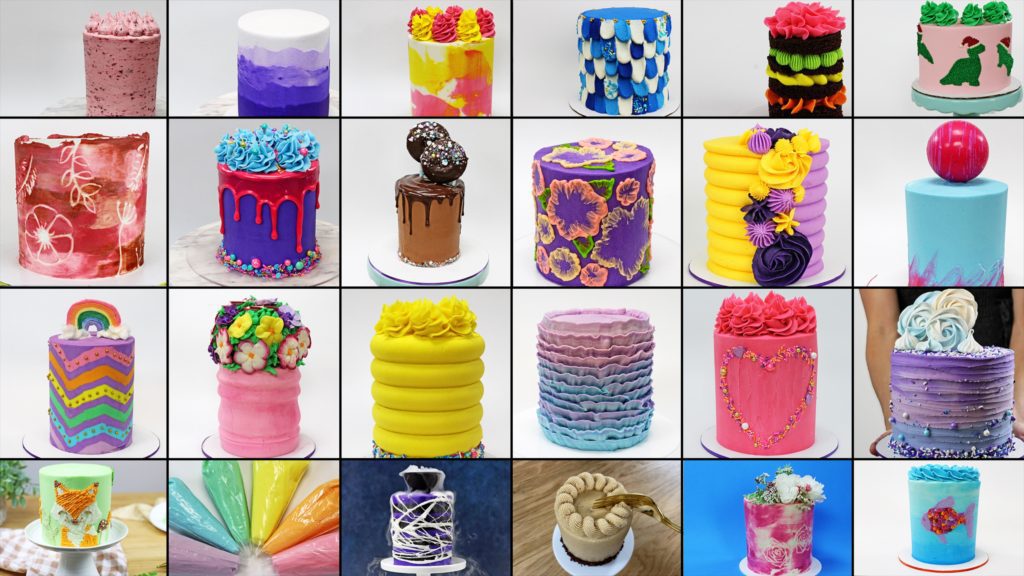
Here’s the video version of this tutorial:
